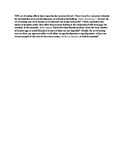| dc.description.abstract | THE act of mating affects insect reproduction in several ways1. First, it may be a necessary stimulus for the initiation of oocyte development, as is found in the bedbug, Cimex lectularious 2. Second, the act of mating may set in motion an accelerated rate of egg maturation3. Third, copulation may induce oviposition rather than affect the processes leading to the attainment of full-term eggs; for example, in the mosquito, Aedes aegypti, blood-fed virgin females produce about the same number of mature eggs as mated females, but most of these are not deposited4. Finally, the act of mating may not have any apparent effect at all, either on egg development or egg deposition: at least one recent example of this, that of the cotton stainer, Dysdercus fastiatus, is well documented5. | en_US |

